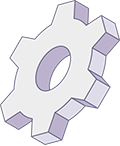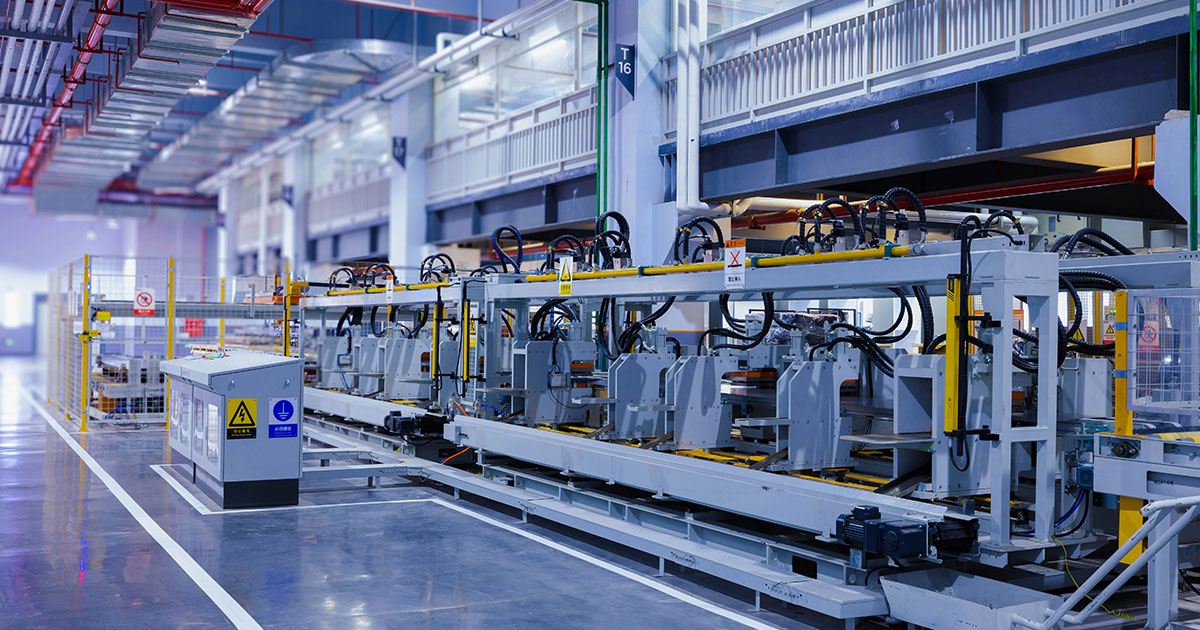




Web Design for Manufacturers: Key Features for a High-Performing Website
In today’s digital-first world, having a strong online presence is crucial for manufacturers. Your website serves as the digital face of your manufacturing business and is often the first point of contact between you and potential clients, suppliers, or distributors. A well-designed website not only conveys professionalism but also showcases your capabilities, products, and services in the best light. Investing in web design for manufacturers is key to standing out in a competitive market.
In this blog post, we’ll explore the key features of a high-performing website tailored to the manufacturing industry and explain why a strategic web design can elevate your business, streamline operations, and drive sales.
Why Manufacturers Need a Professional Website
1. Showcase Capabilities and Expertise
Your website is a powerful platform to showcase your manufacturing capabilities, machinery, product lines, and industry expertise. Potential clients often research online before reaching out, so a professional website is essential for making a great first impression. A well-organized site with detailed information on your services and products helps clients understand your strengths and what sets your business apart from competitors.
2. Attract and Convert Leads
A manufacturing website optimized for SEO (Search Engine Optimization) can significantly improve your visibility on search engines like Google, making it easier for potential clients to find you. By providing relevant information and strong calls-to-action (CTAs), you can convert visitors into leads, inquiries, or even direct customers.
3. Streamline Communication and Operations
Your website can serve as a central hub for communication, allowing potential clients to contact you, request quotes, or inquire about specific products. Additionally, integrating features like order tracking, client portals, or downloadable catalogs can streamline your operations and enhance the customer experience.
4. Enhance Credibility and Trust
In the manufacturing industry, trust is key. A well-designed, informative website establishes credibility and showcases your business as a reliable partner. Including client testimonials, certifications, and case studies on your site further reinforces your reputation as an industry leader.
Essential Features of Web Design for Manufacturers
When it comes to web design for manufacturers, there are specific elements that can make your website more effective in meeting your business goals. Here are the key features you should include in your manufacturing website design:
1. Clean, Professional Design with a Focus on Branding
Manufacturing websites need to convey a sense of professionalism, efficiency, and technical expertise. A clean and modern design, combined with your branding elements (such as logos, colors, and typography), helps create a cohesive visual identity that resonates with your target audience.
Design Tips:
- Use high-quality images and videos of your manufacturing facility, products, and machinery to showcase your capabilities.
- Incorporate a neutral color palette with accents that align with your brand to create a polished and professional look.
- Avoid clutter; use whitespace effectively to keep the layout clean and highlight key content.
2. Product and Service Showcase
Manufacturers often offer a wide range of products, services, and capabilities. Your website should clearly display these offerings to help visitors understand what you do and how you can meet their needs.
Key Elements to Include:
- Product Catalog: Create a well-organized product catalog with detailed descriptions, specifications, images, and downloadable datasheets.
- Service Pages: Develop individual pages for each service you provide (e.g., custom fabrication, CNC machining, assembly services). Include information about the process, capabilities, and benefits.
- Industry-Specific Solutions: Highlight your experience in serving different industries (e.g., automotive, aerospace, medical) to showcase your versatility and expertise.
3. Easy Navigation and User-Friendly Interface
A manufacturer’s website is often packed with information, so it’s crucial to have an intuitive navigation system that allows visitors to find what they’re looking for quickly.
Navigation Best Practices:
- Mega Menus: Use mega menus for easy access to product categories, services, industries served, and other key sections of the site.
- Search Functionality: Implement a search bar with filters to help users quickly locate products, services, or resources.
- Clear CTAs: Include clear calls-to-action, such as “Request a Quote,” “Download Catalog,” or “Contact Us,” to guide visitors towards desired actions.
4. Request a Quote or Contact Forms
For manufacturers, a “Request a Quote” feature is essential. Make it easy for potential clients to inquire about your products or services by including user-friendly forms throughout the website.
Effective Quote/Contact Forms Should:
- Be Simple: Only ask for necessary information (e.g., name, company, email, product interest) to encourage more submissions.
- Include Dropdowns: Use dropdown menus or checkboxes for product categories, industries, or services to streamline the inquiry process.
- Provide Confirmation: Include a confirmation message to let visitors know their inquiry has been received and when they can expect a response.
5. Detailed About Us and Capabilities Page
Your About Us and Capabilities pages are crucial for building trust and credibility with potential clients. They should highlight your company’s experience, expertise, certifications, and the capabilities of your manufacturing processes.
About Us Page Should Include:
- Company History: Share your company’s story, mission, and values to connect with your audience.
- Team Introduction: Introduce key members of your team, emphasizing their expertise and experience in the manufacturing industry.
- Certifications: Display any industry certifications, awards, or memberships to showcase your commitment to quality and compliance.
Capabilities Page Should Include:
- Machinery and Technology: Highlight the equipment, machinery, and technology you use, along with their specifications and capabilities.
- Processes: Describe the various manufacturing processes you specialize in (e.g., CNC machining, injection molding, metal fabrication).
- Quality Assurance: Explain your quality control measures to demonstrate your commitment to delivering high-quality products.
6. Resource Library and Blog
A resource library with downloadable content, such as product catalogs, datasheets, case studies, and whitepapers, adds value to your website and establishes your expertise. Additionally, a blog section with industry insights, technical guides, and company news can improve your website’s SEO and keep visitors engaged.
Content Ideas:
- Product Datasheets: Provide detailed product specifications in downloadable PDF format.
- Case Studies: Share real-world examples of successful projects to demonstrate your expertise.
- Industry News: Write about the latest trends, technologies, and best practices in the manufacturing industry.
7. Mobile Optimization
With an increasing number of users browsing websites on mobile devices, having a mobile-optimized website is crucial. A responsive design ensures that your website looks and functions well on all devices, including smartphones and tablets.
Mobile Optimization Tips:
- Use a responsive design that automatically adjusts to different screen sizes.
- Simplify navigation and forms for easy use on mobile devices.
- Optimize images and videos for faster loading times on mobile networks.
8. SEO Optimization for Enhanced Visibility
Optimizing your website for search engines is key to attracting potential clients. SEO for manufacturers should focus on both technical aspects and content optimization to improve your website’s rankings for industry-specific keywords.
SEO Strategies:
- Keyword Research: Target keywords related to your products, services, and industry (e.g., “custom metal fabrication,” “CNC machining services”).
- Meta Tags: Optimize meta titles and descriptions for each page to include relevant keywords and encourage click-throughs.
- Internal Linking: Use internal links to connect related pages, such as linking from a product page to a downloadable datasheet or a service page.
9. Client Portals and Online Ordering
If your manufacturing business offers client-specific solutions or online ordering, integrating a secure client portal or eCommerce functionality into your website can streamline operations and enhance customer experience.
Portal and Ordering Features:
- Client Login: Provide existing clients with a secure login to access order tracking, project updates, or custom product configurations.
- Online Catalog: Allow clients to browse products, request quotes, or place orders directly from your website.
10. Testimonials and Certifications
Including testimonials from satisfied clients and displaying your certifications (such as ISO, CE, or industry-specific standards) builds credibility and trust. It shows potential clients that you are a reputable manufacturer committed to quality and customer satisfaction.
Testimonial Tips:
- Use real client names and company affiliations for authenticity.
- Highlight specific achievements, such as meeting tight deadlines or delivering high-quality products.
How to Choose the Right Web Design Company for Your Manufacturing Business
Choosing the right web design company is essential for creating an effective website tailored to the manufacturing industry. Here’s what to consider:
1. Industry Experience
Select a web design company with experience in creating websites for manufacturing businesses. They’ll understand your industry’s unique needs and be able to showcase your capabilities effectively.
2. Portfolio and Case Studies
Review their portfolio to see examples of manufacturing websites they’ve built. Look for sites that align with your vision in terms of design, functionality, and industry focus.
3. SEO and Content Expertise
Ensure the company offers SEO services and has experience with content creation for manufacturing websites. This ensures your site will not only look great but also rank well in search engines and attract the right audience.
4. Ongoing Support and Maintenance
A manufacturing website requires regular updates and maintenance to remain secure and up-to-date. Choose a web design company that provides ongoing website support services.
Conclusion
A well-designed website is a powerful tool for manufacturers, serving as both a digital showroom and a resource hub for potential clients. By focusing on key features like product showcases, easy navigation, quote forms, and SEO optimization, you can create a website that effectively markets your business, attracts more leads, and supports your operations.
At Masthead Technology, we specialize in web design for manufacturers, creating custom websites that showcase your capabilities and drive business growth. Contact us today to learn how we can help you build a high-performing website tailored to your manufacturing business.
FAQs
1. How much does it cost to design a manufacturing website?
The cost varies depending on the complexity of the site, desired features, and content needs. Basic websites can start around $2,000 to $5,000, while more advanced, custom-built sites with product catalogs, client portals, and SEO services may range from $7,000 to $15,000 or more.
2. How long does it take to build a manufacturing website?
The timeline depends on the project scope. A simple website may take 4-6 weeks to build, while a more complex website with custom functionalities can take 2-3 months or longer.
3. Can I update my manufacturing website myself?
Yes, most websites are built on content management systems (CMS) like WordPress, which allow you to update content, add products, and make changes easily.
4. Why is SEO important for manufacturing websites?
SEO helps your website rank higher in search engine results, making it easier for potential clients to find you. Optimizing for relevant keywords, such as “custom fabrication” or “precision machining,” increases your visibility and attracts targeted traffic.
5. What kind of content should a manufacturing website include?
Your website should include product and service pages, an About Us section, case studies, downloadable datasheets, a blog with industry insights, and a contact page with a quote request form.

